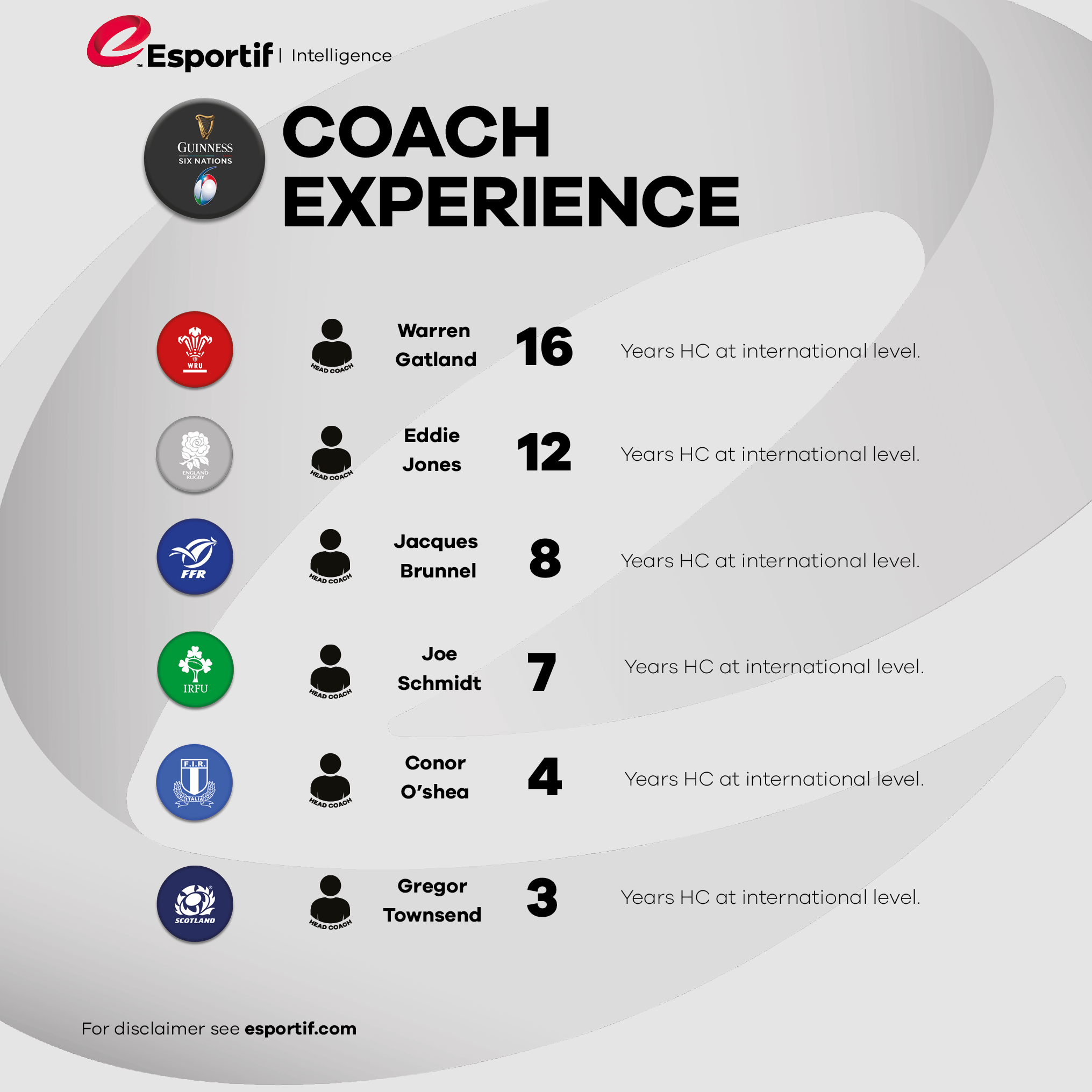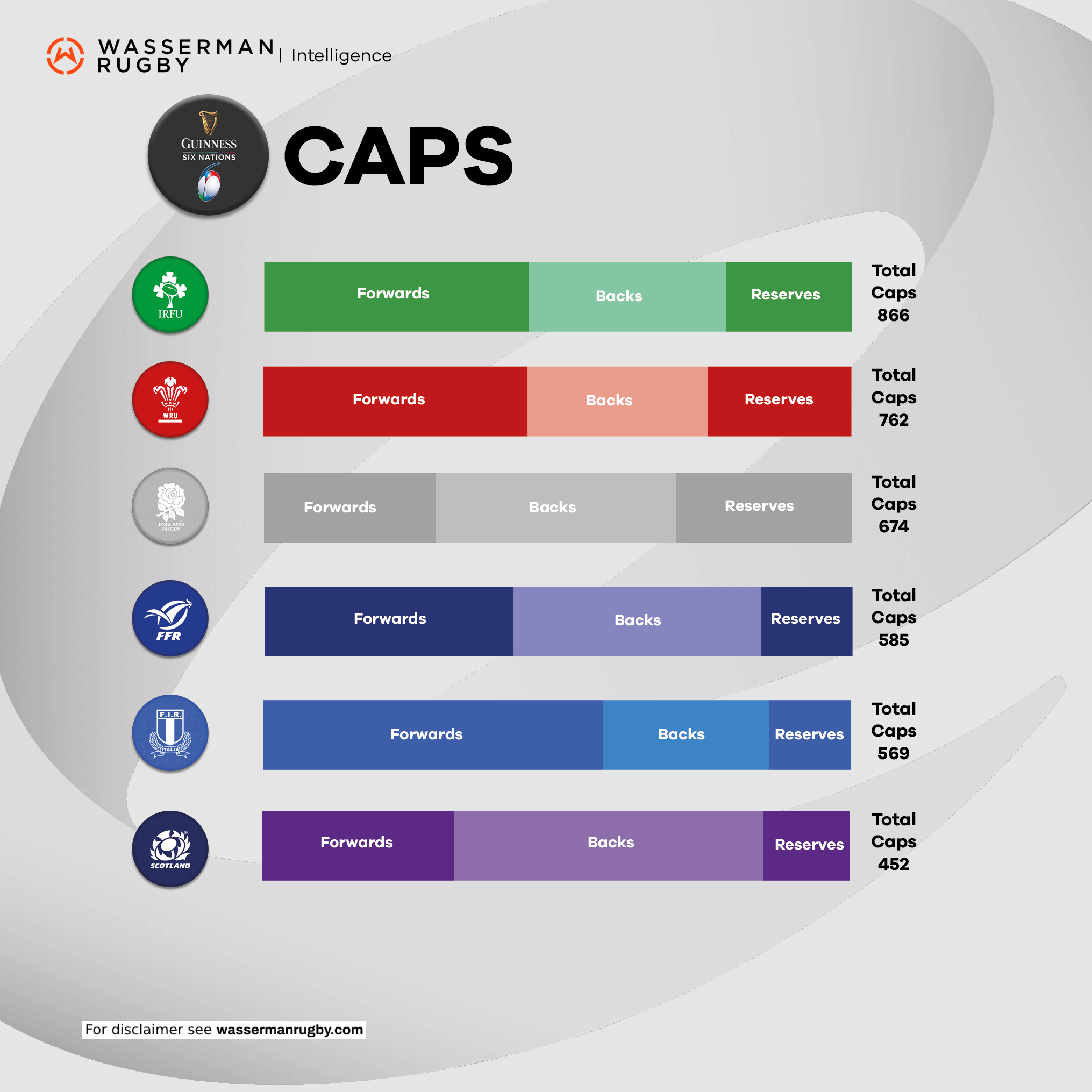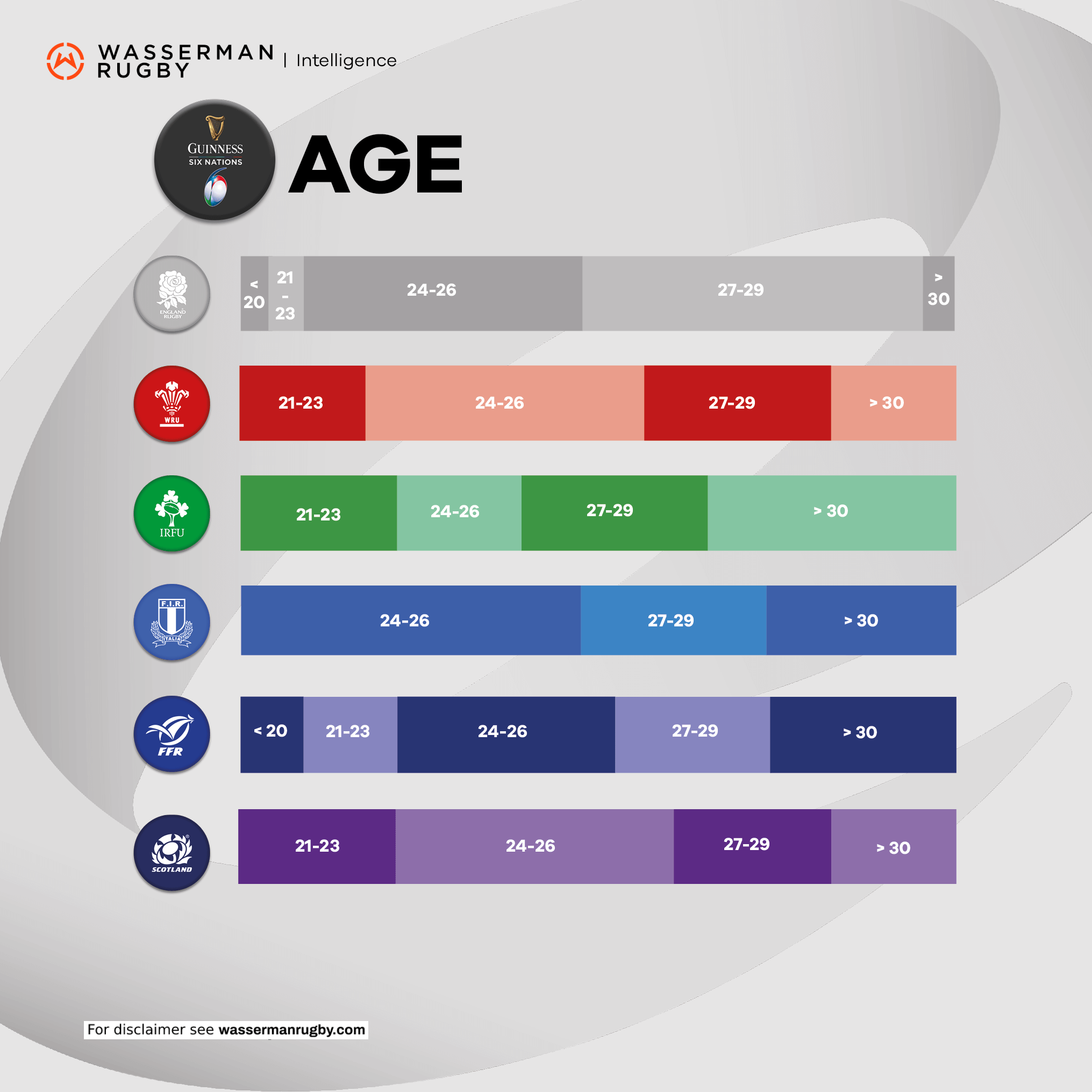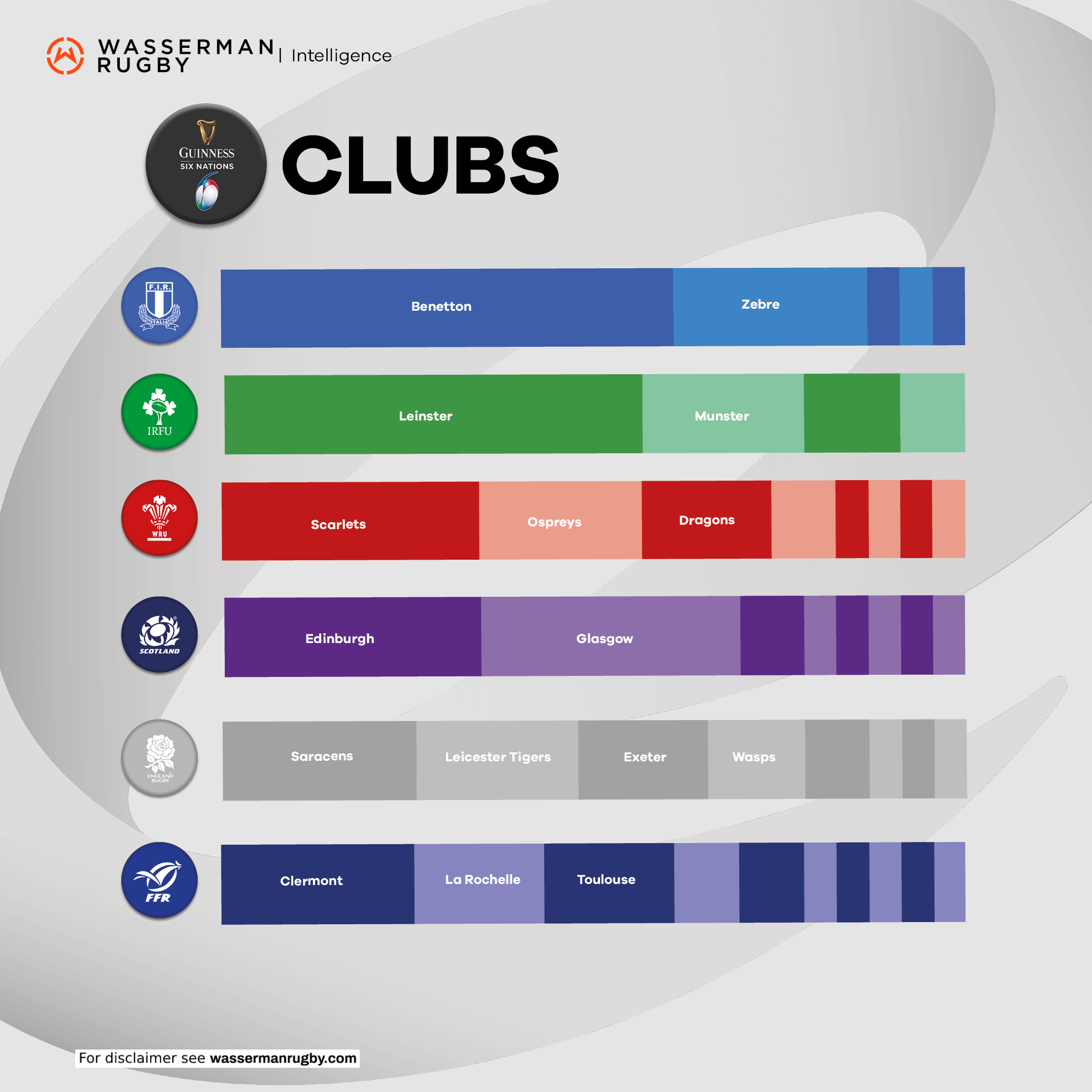

There were no changes to Head Coaches from 2018, with most coaches having been contracted until post-World Cup 2019. So, it’s the last Six Nations for Warren Gatland, Joe Schmidt and Jacques Brunel, as well as it being heavily rumoured that Eddie Jones will also follow suit. In terms of international experience, Warren Gatland stands apart from the others with 16 years’ experience (the closest being Eddie Jones with 13 years).
Despite Jacques Brunel having over 30 years coaching experience including 6 years as an assistant coach of France, Brunel only has 8 years’ experience as Head Coach (including a spell with Italy). This is then closely followed by Schimdt with 7 years’ experience. The two stragglers in this regard are Conor O’Shea with 4 years’ experience and Gregor Townsend with 3 years but the latter has a growing reputation since his transition from player to coach and both boast successful CVs from the club game.

In terms of caps, Ireland have by far the most with a total of 866 – an increase of 47 from last year’s total. With a very similar squad to the opening game last year, Schmidt has a core group of players that he has been using for more than just this year despite having capped 46 players since last year’s Six Nations. Only 4 of the 23 have less than 10 caps and only 1 player has less than 5 (Cooney).
After experimenting with the most inexperienced squad last year (262 caps among the 23), the return of the old guard of Parra, Fofana, Huget and Medard (with over 200 caps between them) saw France on par with the other nations at the start of their campaign. Wales and Scotland have both been impacted by injuries to key players in the last 2 years of the Six Nations, albeit oppositely. For Wales, the return of key players this year (Tipuric and Davies) sees them 2nd highest in terms of test match experience, correlating with their performances and eventual Grand Slam. However, for Scotland, injuries to Barclay and Watson (with 94 caps between them) may help to explain their tepid campaign culminating in a Twickenham classic.
Another team to concede experience was England, with Jones losing faith in a number of stalwarts from when he first took over (Hartley, Cole and Robshaw). But the opposite happened for England who started the campaign in blockbuster fashion before a 2nd half collapse against Scotland in the final game, arguably exposing their lack of experience.
Italy started the 2019 Six Nations with one of the most experienced packs in the competition, mainly down to their beloved captain Parisse and the ever dependable Ghiraldini (who between them have 72% of the total caps of their starting pack and make up 42% of the whole 23’s caps). Without them, however, they remain one of the most inexperienced teams despite an increase in caps across the back line this year.

Age is a very interesting area to look at in terms of this year’s Six Nations. Teams that did well this year saw a large part of their squad falling in the 27-29 age category which is generally considered to be prime age for rugby players (peak of physicality as well as playing with experience). This was the case for the teams finishing 1st and 2nd (Wales and England), both boasting high numbers in this age category. Both teams were also bolstered by large numbers in the age category below (24-26) with 6 Welsh and 3 English players entering their 27th year next year (also boding well for future campaigns). The one factor which separates these teams in terms of age, and may have been a determining factor in the race for the Six Nations, is England only had one player in the 30+ category whereas Wales had 4. This experience shone through in their game against England.
Ireland on the other hand have the greatest share of their 23 in the 30+ category (8 players), 5 of which are in the Starting 15. This potentially raises some questions as to whether the Ireland squad are now moving out of their prime years and may explain the drop in performances from last year (when they had 8 players in the prime years). The 24-26 age category dominates for both Scotland and Italy but, albeit the latter have no players below this age range (understandably relying on experience this close to a World Cup). Scotland have the fewest players in the top two age categories similar to last year. With these age ranges proving pivotal for Wales and England, was this a factor in Scotland’s disappointing 2nd last finish?
France have the widest age range across their squad, including 2 below 20yrs of age and 6 30+ (including the return of some of the experienced players noted above).

Breakdown of the players by club is an area where England and France are often seen to have a big disadvantage because of the sheer volume of top-level clubs in their home nations. Both 23s are spread across 8 and 10 teams respectively with a max of 6 players from one club, making team cohesiveness more challenging. This compared to Ireland whose 23 are spread across 4 teams and, with 56% of players coming from Leinster (and potentially more from their development system), provides a drastic contrast.
Though both Wales and Scotland’s teams draw from a similar number of clubs as England and France, the key difference is that both have over 35% of players from the same club. Furthermore, the majority of their 23s play their club rugby in Wales (19 across 4 clubs) and Scotland (16 across 2 clubs) respectively.
Notably, both these teams ought to be careful as these numbers dropped from 2018 but, with Wales implementing a new contracting system, it is expected to help keep top international talent in Wales. The opposite may be true for Scotland as, following a number of key players already leaving in previous seasons (Laidlaw and Russell), Hogg is set to follow post-World Cup. Italy are another team with the majority of the 23 playing in Italy (20) and predominantly with Benetton; however, with no restrictions on international selection, could we start to see the same vacuum form around Italy’s top talent?
In terms of the final standings, the aforementioned experience of not only Gatland but also Wales’ key players (both in terms of caps and the 30+ category) appeared to prove invaluable. This, backed up by the age profile of their squad, bodes well for the upcoming Rugby World Cup (where, historically, winning teams since [1999] have averaged over 878 caps).
